Add big Filipino flavors to almost any dish with the addition of Filipino Atchara. This tangy, sour pickled slaw is a popular condiment and side dish. It adds so much flavor and texture to almost any Filipino dish.
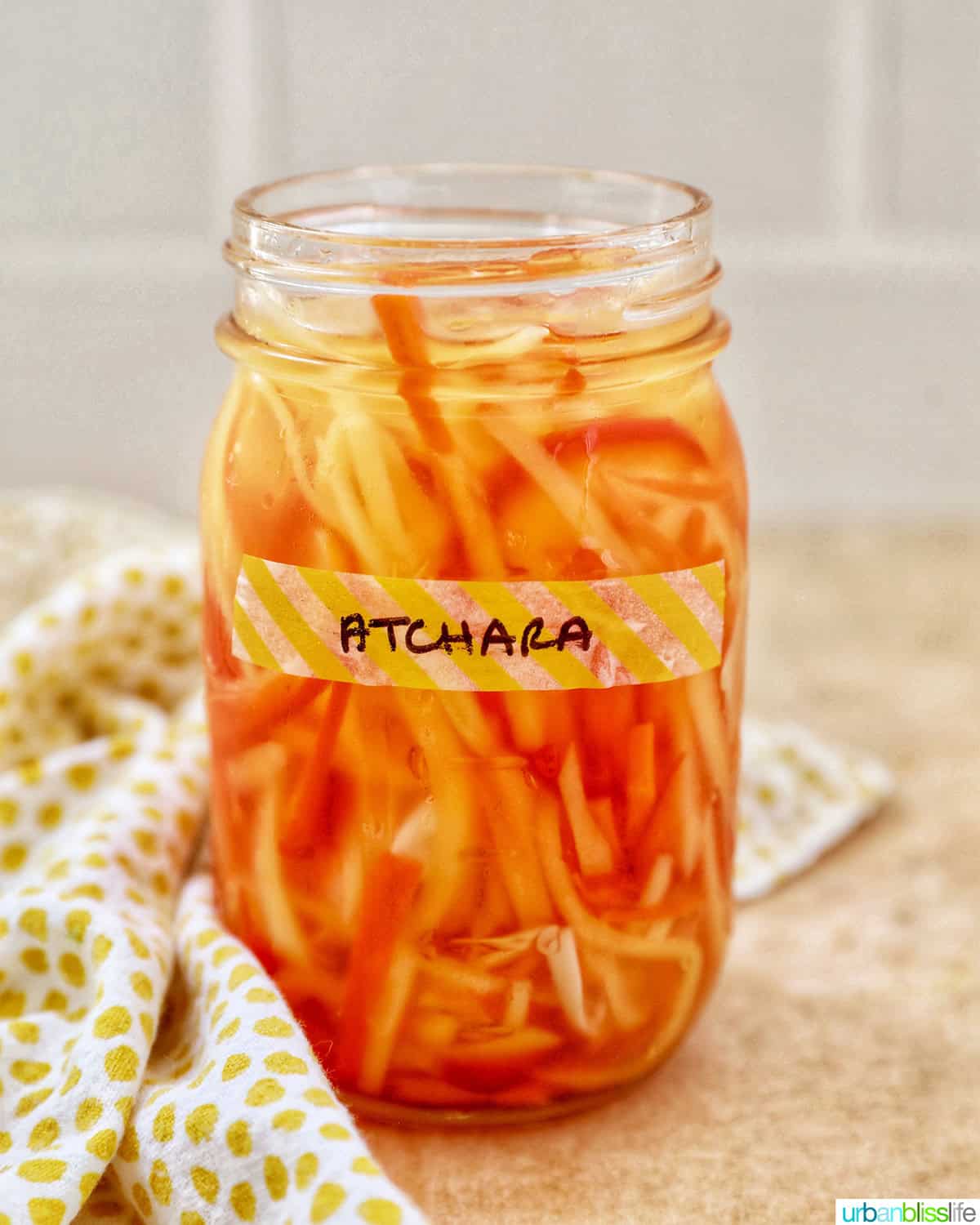
Filipino food is a delicious blend of sweet, sour, salty, tangy flavors. But as if the bold flavors of Filipino lumpia, adobo chicken, or shrimp in coconut milk weren't enough, there's also a traditional Filipino slaw that is sometimes added on.
Atchara is a traditional Filipino condiment made from unripe papaya, carrots, bell peppers, onions, and garlic. The ingredients are marinated in a mixture of vinegar, sugar, and salt, then served as a side dish or condiment.
It's something that I've seen served at our Filipino family dinner parties and holidays growing up, right next to a variety of savory dishes. It's a popular accompaniment to dishes like grilled or fried fish, pork barbecue, pork belly, and spring rolls (lumpia).
And, it's an easy recipe to make at home!
Jump to:
🌟 Why this recipe works
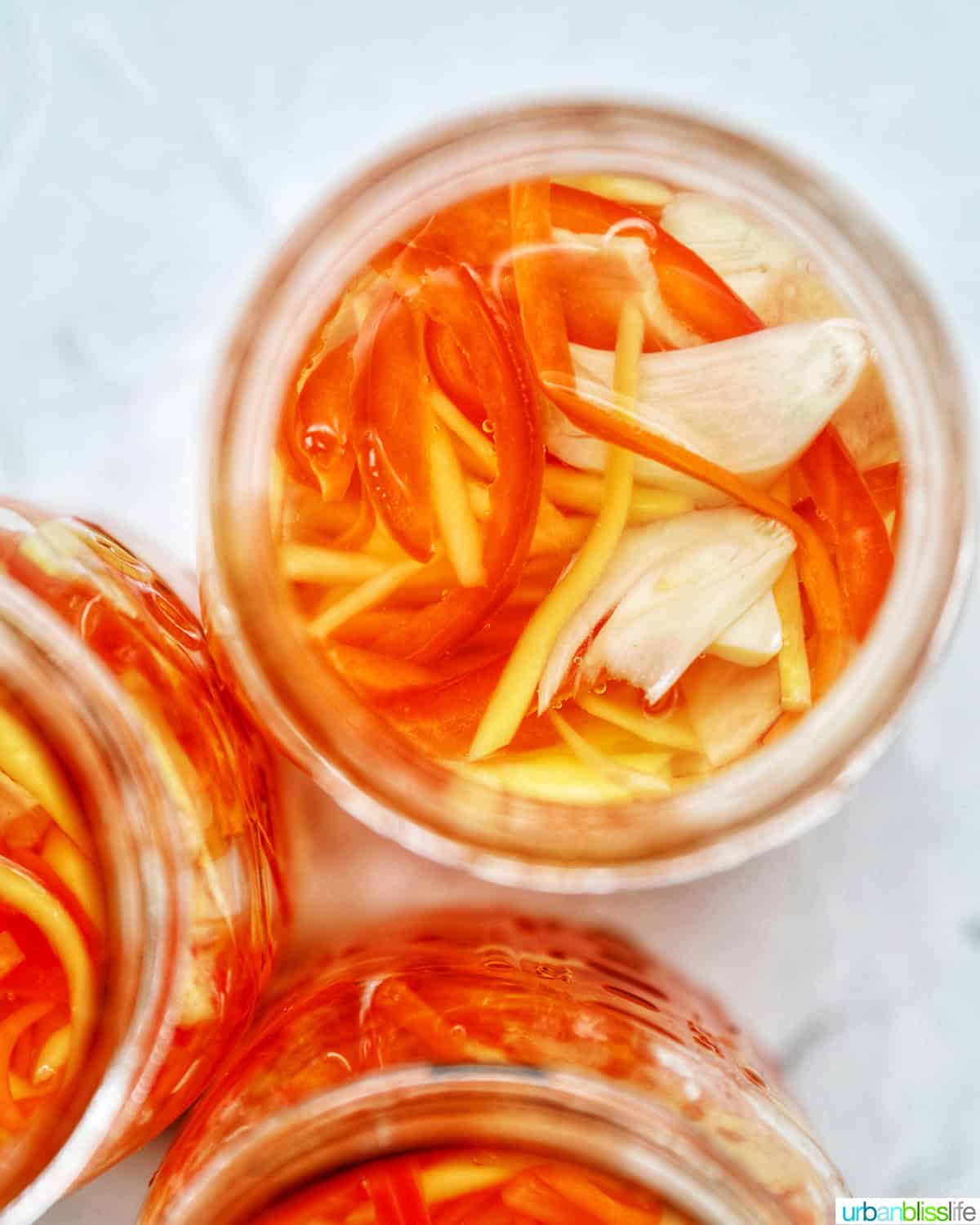
Atchara is known for its refreshing taste and crunchy texture, making it a favorite among Filipinos and a staple in Filipino cuisine. Here are a few reasons you'll want to make this atchara recipe to complete any Filipino meal:
- Easy - This is a truly easy recipe to make at home. I've got step-by-step photos below to help you out!
- Make-ahead - You make atchara at least 24 hours before serving. So it's a great make-ahead dish for any meal.
- Versatile - We Filipinos use atchara on so many dishes! It can be served as a condiment to enhance a dish or as a side dish. See the Serving Ideas section below for some of our favorite ways to use Atchara.
- Flavorful - The distinct flavors of this colorful slaw add a sweet, tangy, and slightly sour flavor to any meal.
🛒 Ingredient notes
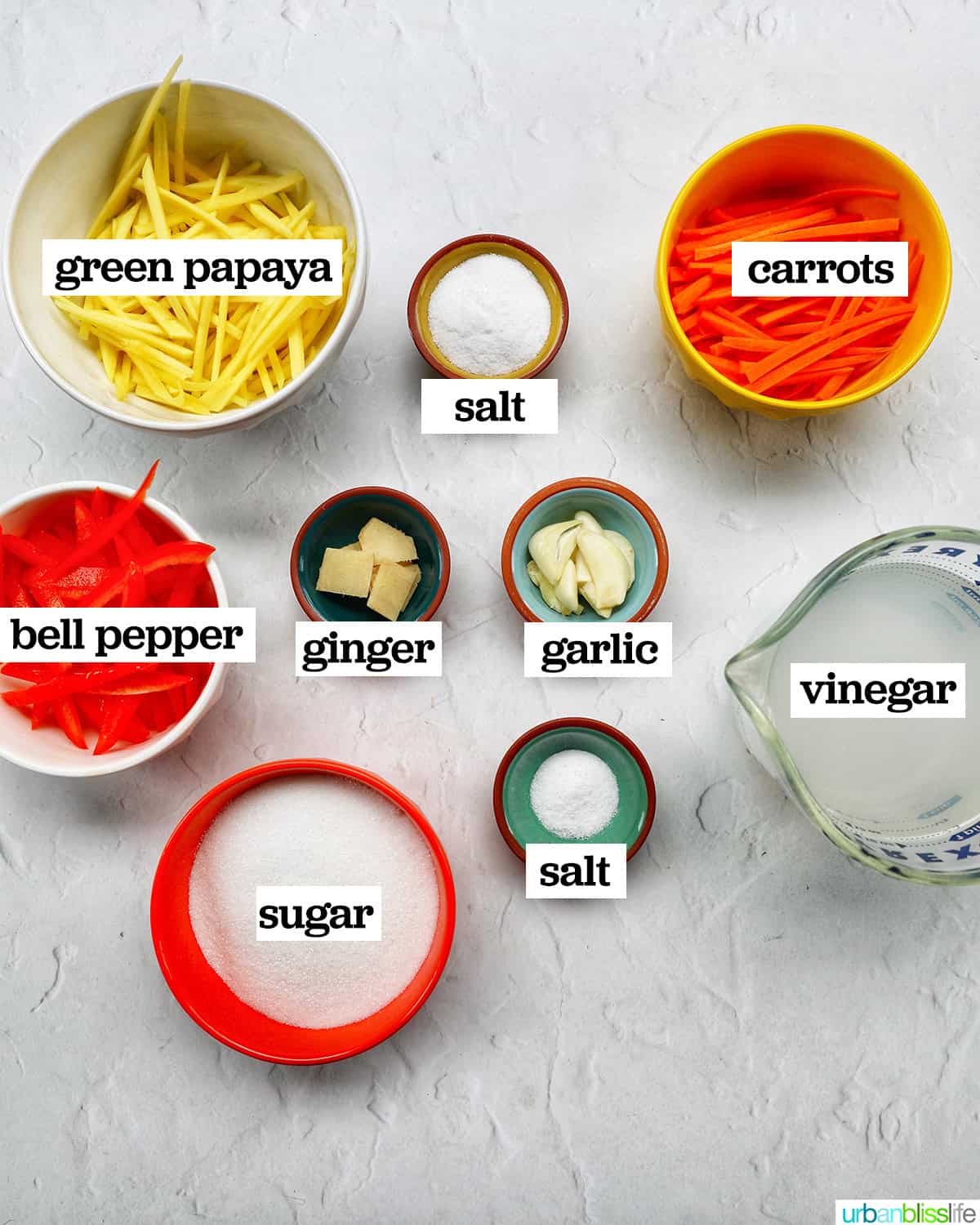
- Papaya - You will need an unripe papaya - a green papaya. The recipe doesn't work with ripe papaya because it ends up being mushy. In a pinch, you can substitute unripe mango. Julienne the papaya (cut into thin matchstick shapes) or use shredded papaya. But an unripened papaya is best.
- Carrots - Slice the carrots very thinly, with julienne cuts, or use shredded carrots.
- Bell Pepper - I prefer to use red bell pepper, as it's more traditional. But you can also use orange bell pepper or yellow bell pepper.
- Ginger & garlic - Fresh ginger root and fresh garlic clove, both sliced, add great flavor to the atchara. Some people like to add whole cloves of garlic, but I prefer sliced.
- Sugar - You'll need a cup of sugar to make the pickling juice.
- Salt - You'll need two separate measurements of salt: one to brine the veggies, and one to use to pickle the veggies in the mason jar.
- Vinegar - Use Filipino cane vinegar, such as Datu Puti vinegar, or white vinegar for the pickling liquid.
Optional additional ingredients - some people like to add whole peppercorns, sliced green bell pepper, chile peppers, or red onions.
🛒 Looking for Filipino ingredients? Find them in my online shop!
✅ Step-by-step instructions
A full list of ingredients with measurements and more detailed instructions are in the printable recipe card at the bottom of this post. But here are some helpful step-by-step photos to show you how to make this homemade atchara recipe.
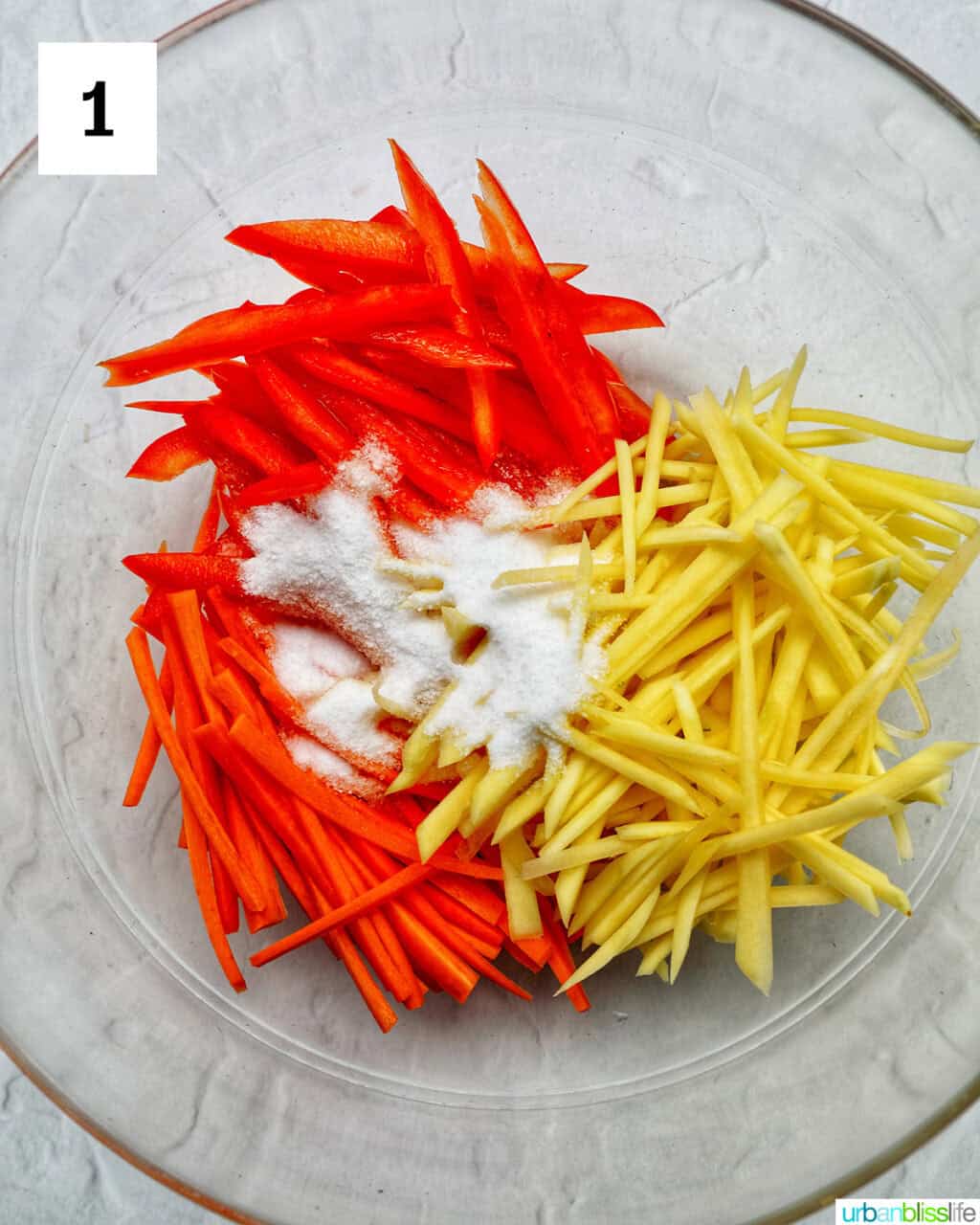
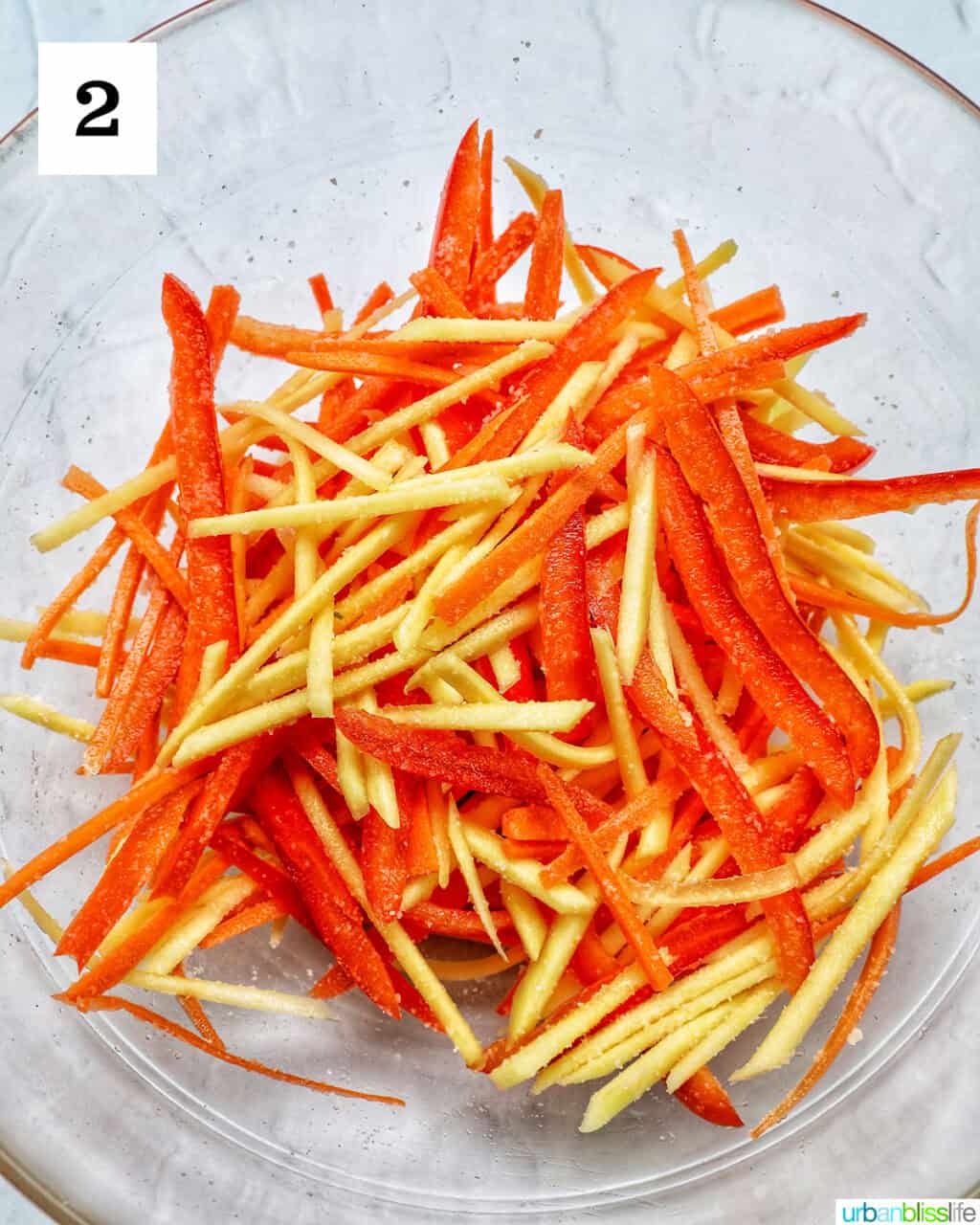
- In a large bowl, mix together the papaya, carrots, red peppers, and kosher salt.
- Allow to sit for about 30 minutes.
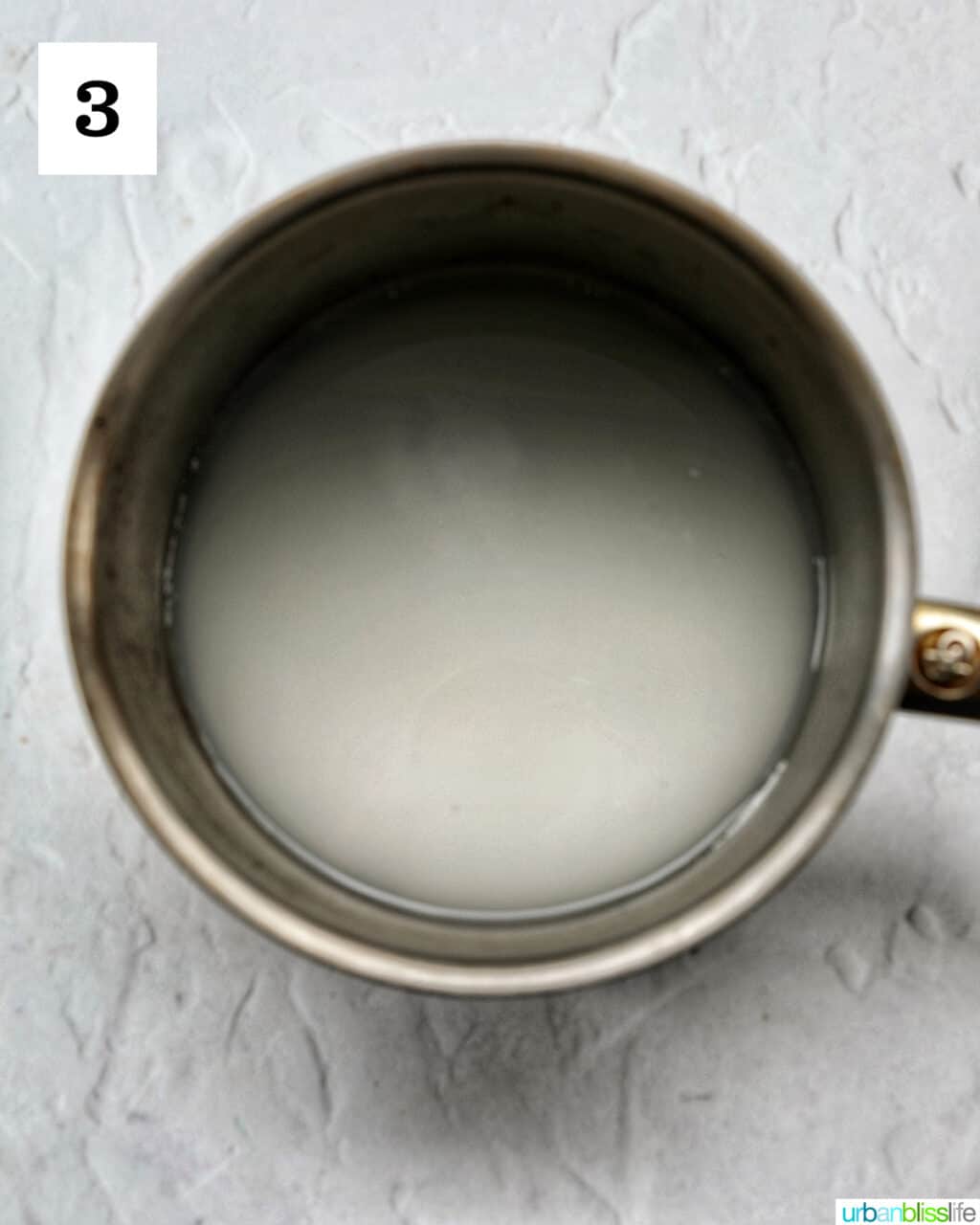
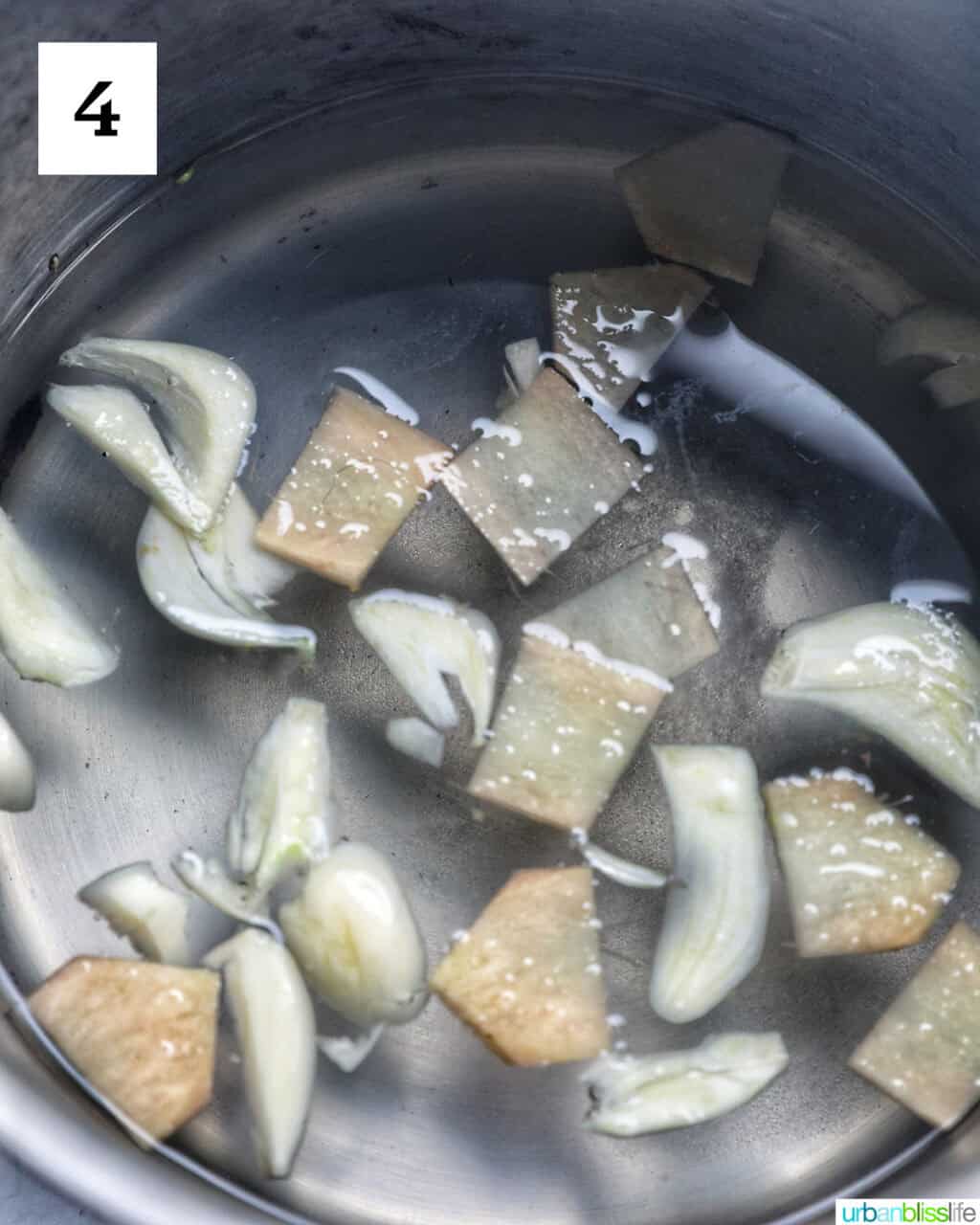
3. Meanwhile, in a small saucepan over medium-high heat, add the cane vinegar, cup sugar, and 1 teaspoon of salt. Bring to a boil, then lower and simmer, stirring, just until the sugar dissolves.
4. Add the garlic and ginger slices and simmer on medium heat or low-medium heat for 1 minute. Remove from heat and set aside.
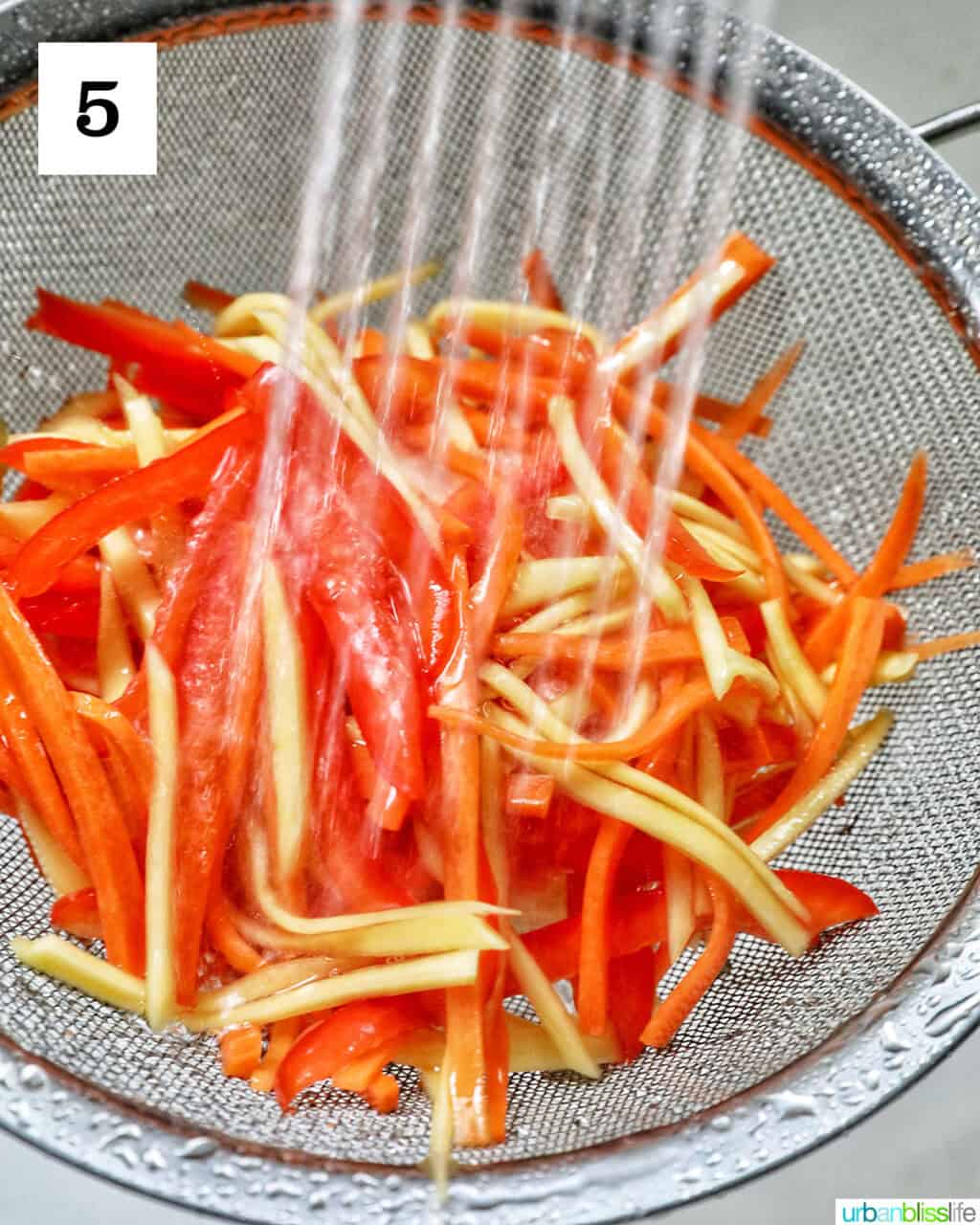
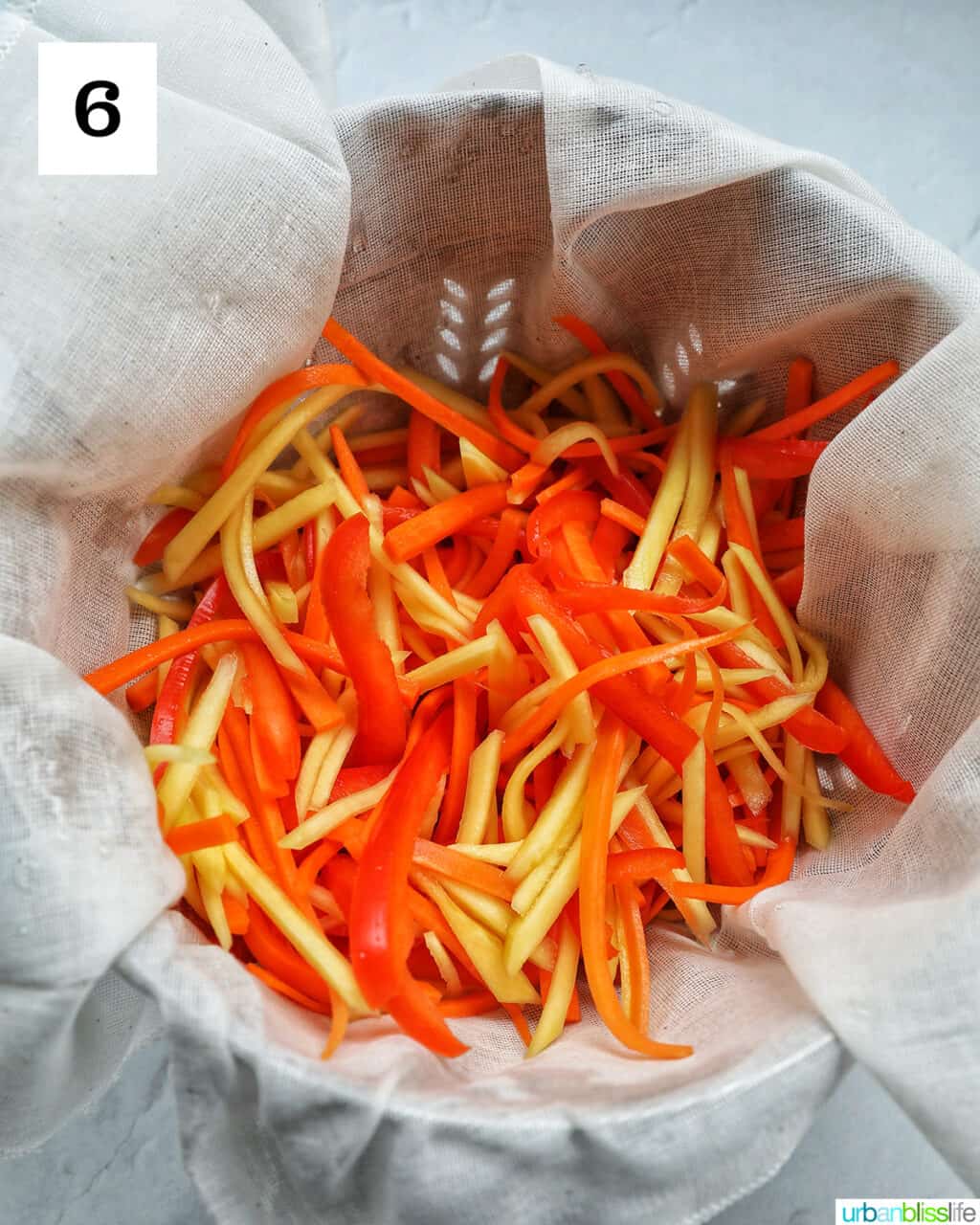
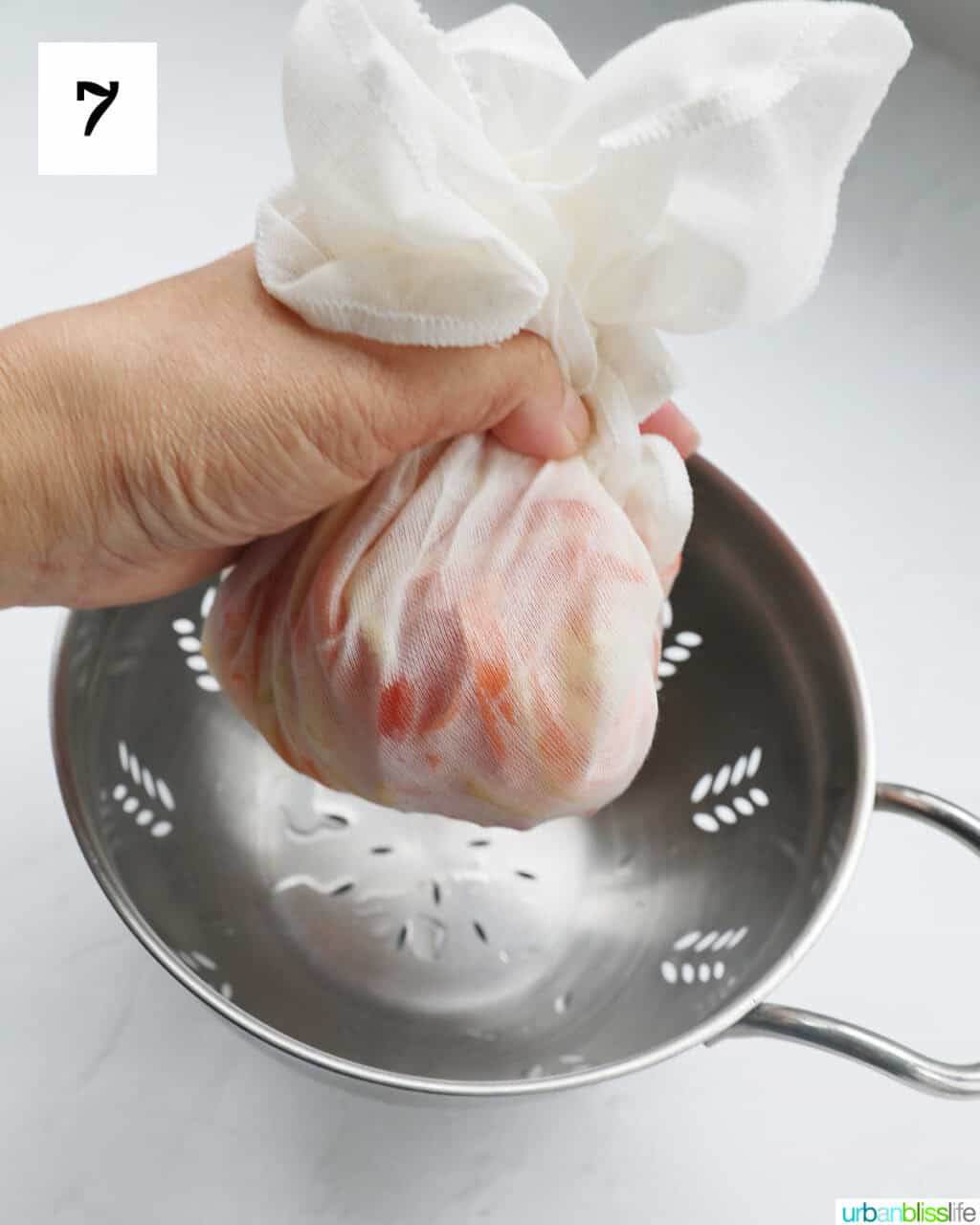
5. Rinse the veggies in a strainer under cold water for 30 seconds.
6. Place them into a cheese cloth and pat dry.
7. Then gently squeeze out the liquid. You want to remove as much of the liquid out of the papaya mixture as possible.
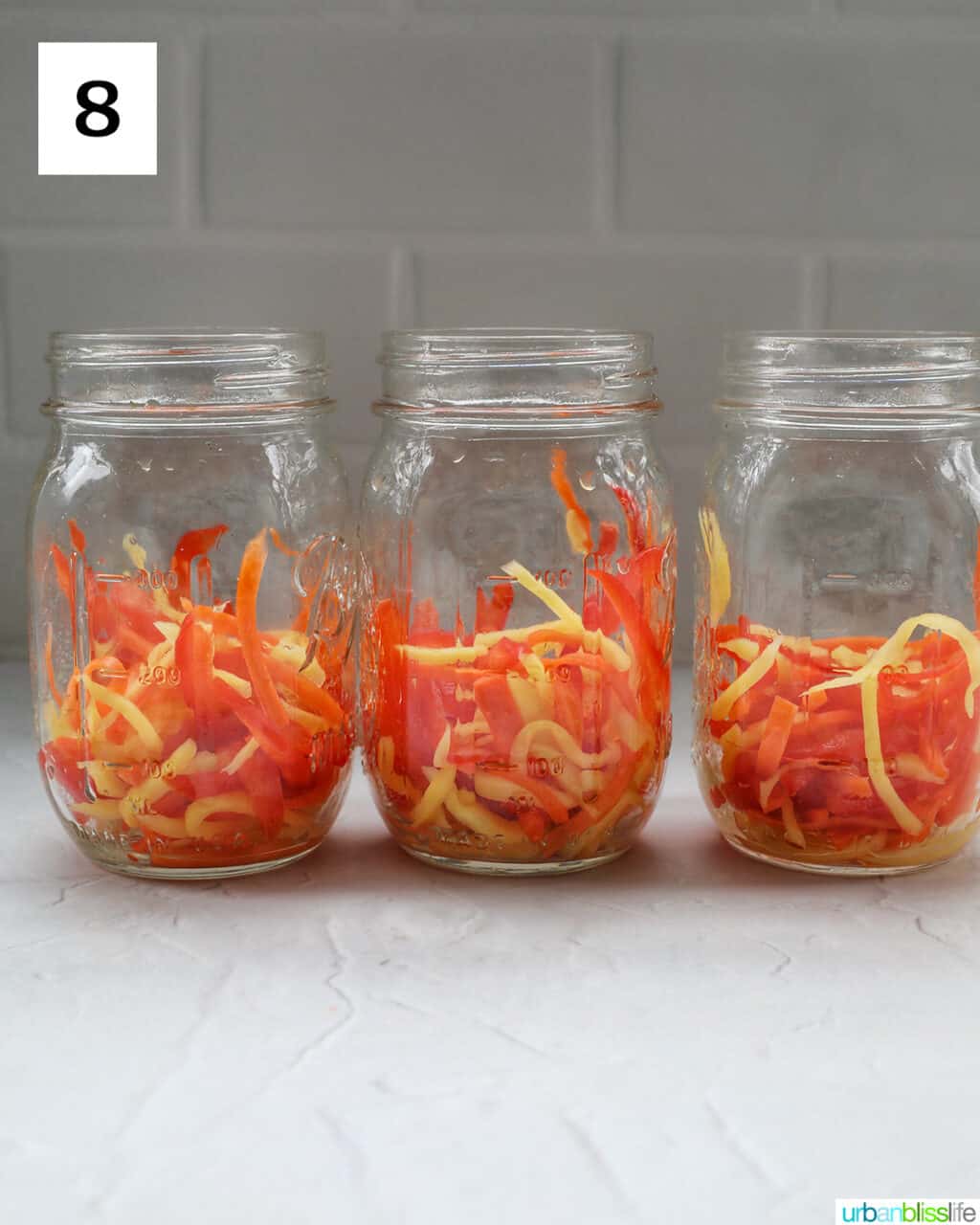
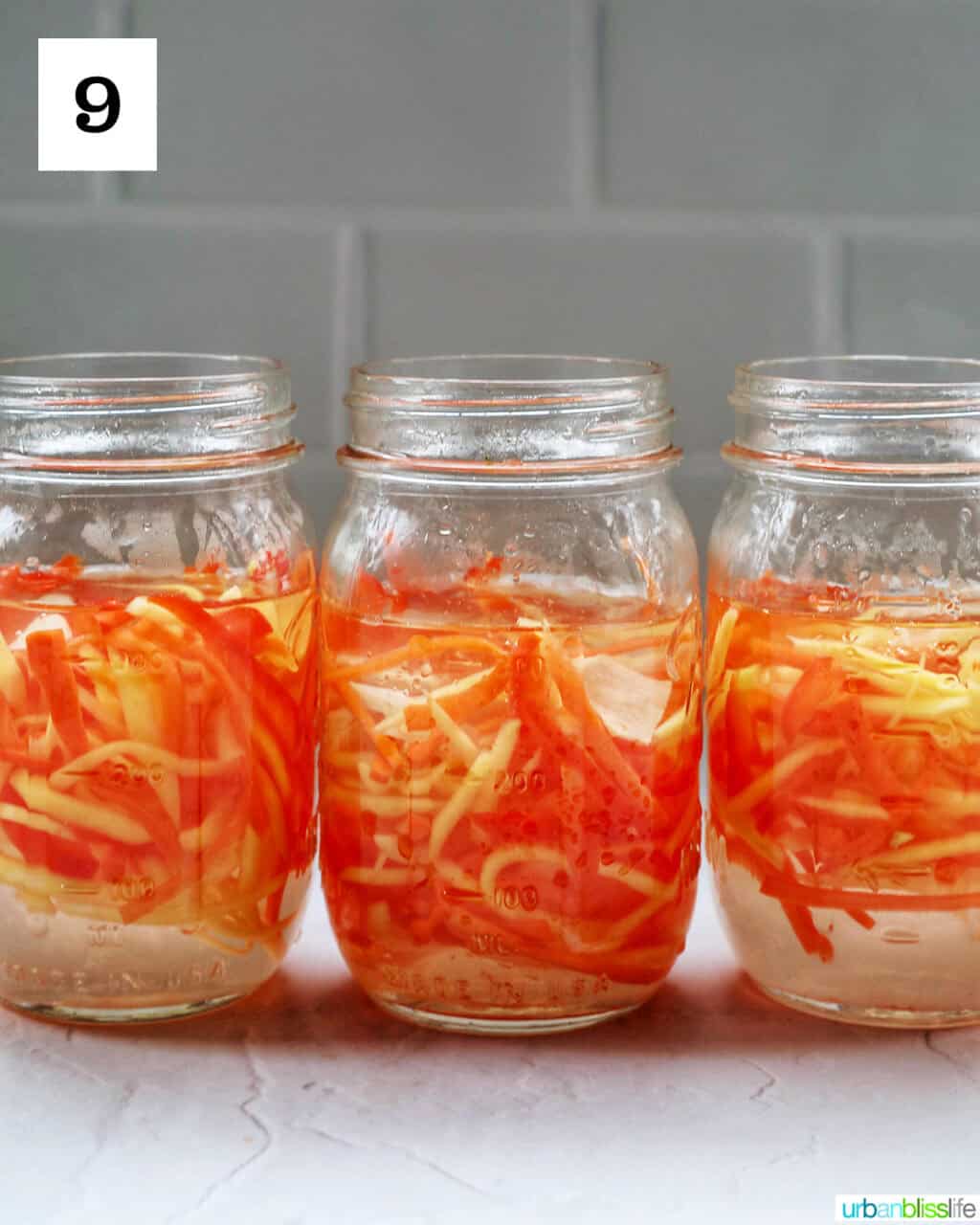
8. Divide the veggies evenly among mason jars.
9. Pour the liquid into each glass jar, making sure to add equal amounts of the garlic and ginger slices between the jars.
Allow the atchara to cool to room temperature before covering and refrigerating for 24-48 hours before using.
👩🏻🍳 Recipe FAQs
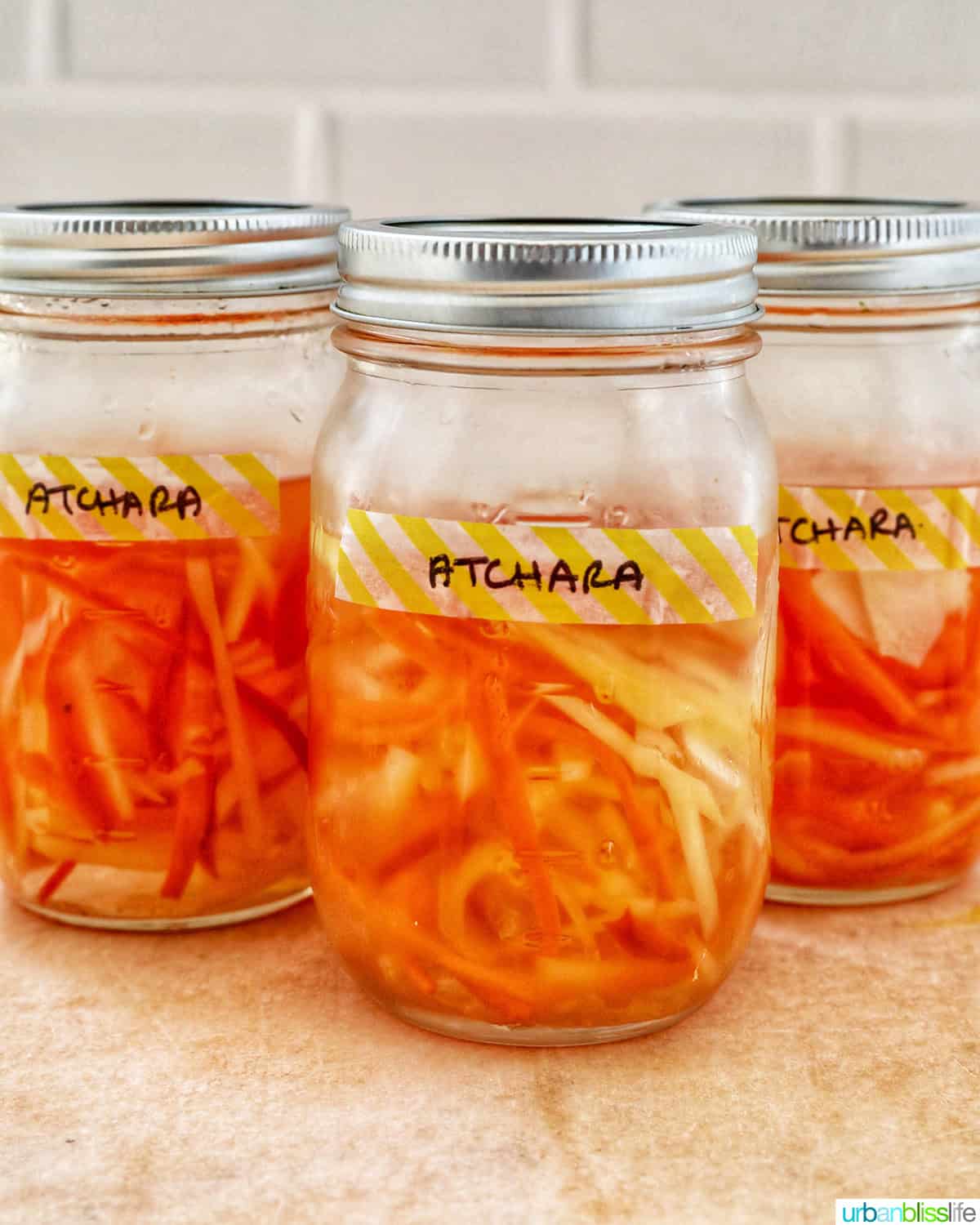
You can use unripe mango or even jicama. You want a crunchy vegetable for the substitute, and not a ripe soft vegetable that might turn mushy in the pickling process.
Store atchara in an airtight container, like a mason jar, in the refrigerator for up to two months.
🍽 Serving ideas
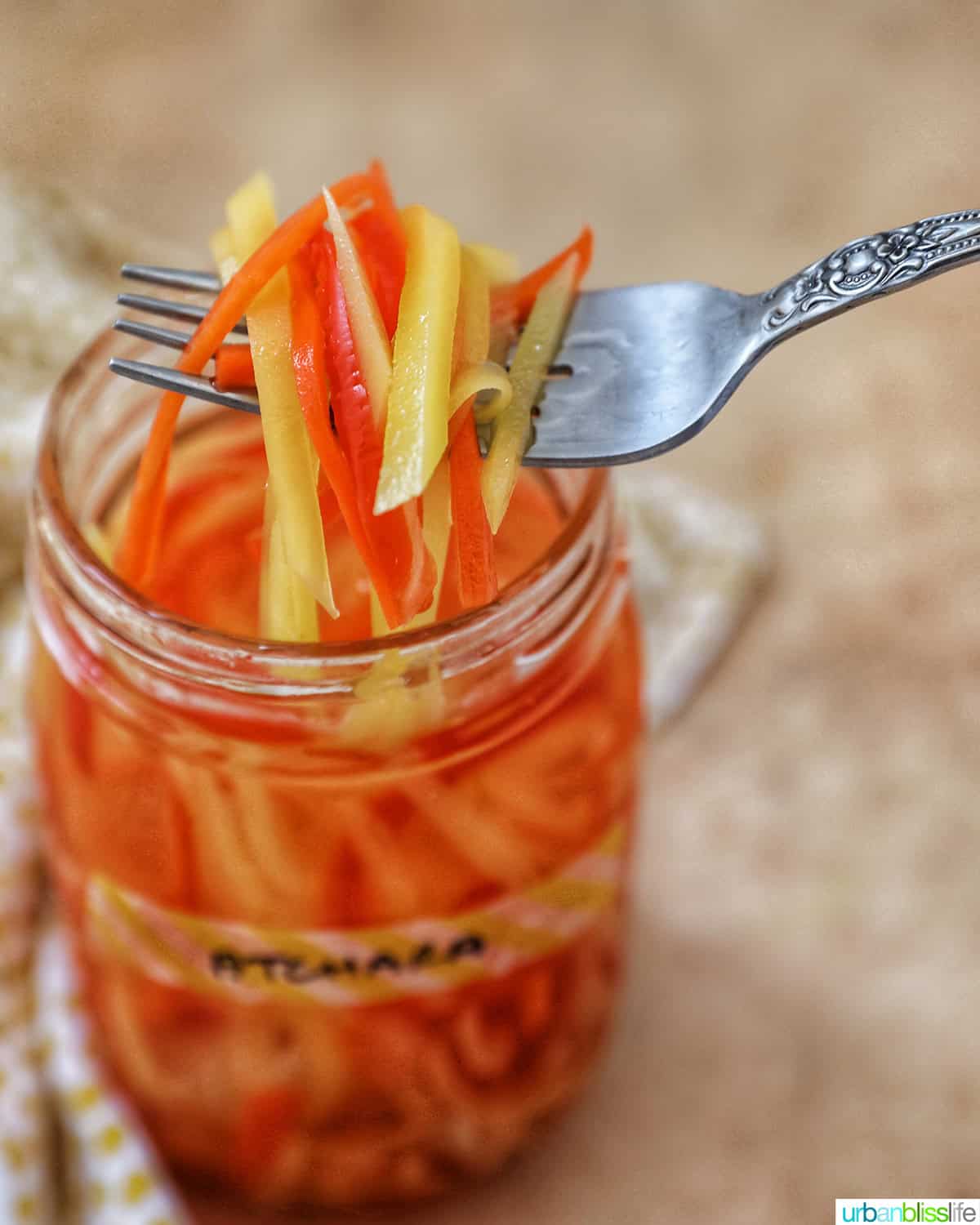
Here are some of my favorite ways to serve atchara:
- As a tangy side dish to Adobo - Our Instant Pot Filipino Chicken Adobo is typically served with steamed rice and a side of atchara. The acidity of the atchara helps cut through the richness of the adobo, adding brightness to each bite.
- With Pancit - Pancit Bihon and Pancit Canton are often served during special occasions and gatherings. And atchara is served as a refreshing side dish that contrasts with the savory and sometimes heavy flavors of the noodles. I like to add atchara to the noodles for extra crunch!
- As a condiment for Lumpia - We usually serve our lumpia with a sweet chili dipping sauce, and a side of atchara. The acidity and crunchiness of the atchara complements the crispy exterior and savory filling of the lumpia.
- With chicken wings - I love the tanginess this pickled Filipino slaw adds to crispy Salt and Pepper Wings.
- Serve it with breakfast - You'll often see atchara served at breakfast. It's a refreshing contrast to heavy Filipino breakfasts like Longsilog or Spamsilog.
🍳 Kitchen tools and equipment
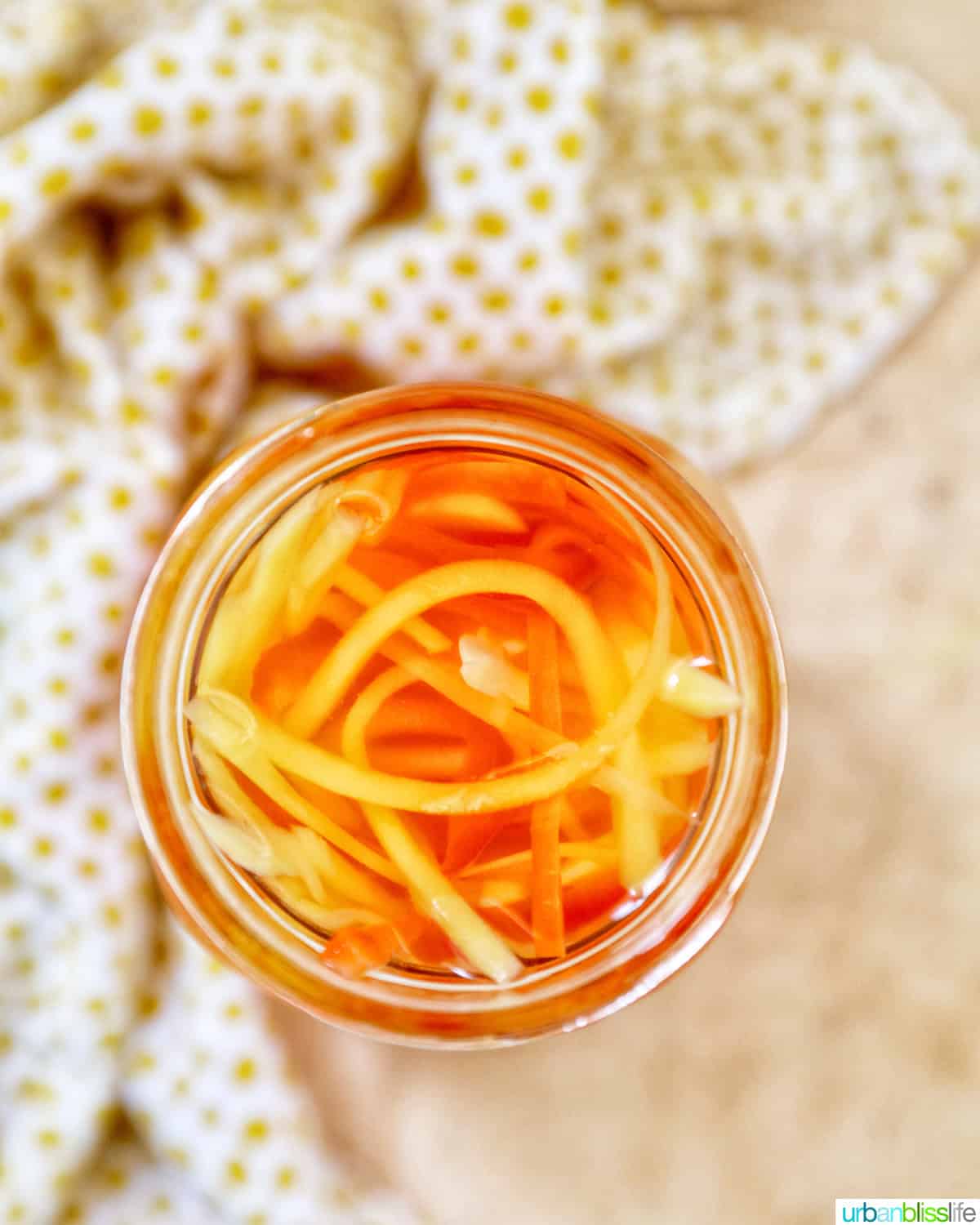
Ready to make Filipino atchara? You really only need a few tools to make this popular Filipino condiment.
- Cutting board and knife - You'll need a sturdy cutting board and sharp knife to prep the ingredients.
Large bowl - Use a large bowl to brine the vegetables in the salt in the first step. - Strainer - Use a strainer to give the brined vegetables a quick rinse before wringing out the liquid.
- Cheesecloth - You'll need a cheesecloth or you can use paper towels to wring out the liquid.
- Mason jars - I store these in 12-ounce mason jars or 16-ounce mason jars.
More Filipino recipes
Did you make this recipe? Don't forget to leave a 5-Star 🌟🌟🌟🌟🌟 rating in the recipe card, and if you really loved it, please leave a comment further down on the page. Thank you!

Atchara
Equipment
- 1 small saucepan
Ingredients
For the vegetable base
- 1 green papaya, thinly sliced (julienned) about ¾ pound
- 2 medium carrots, peeled and julienned
- 1 red bell pepper, julienned
- 2 Tablespoons kosher salt
For the pickling liquid
- 2 cups cane vinegar
- 1 cup granulated sugar
- 1 teaspoon kosher salt
- 2 garlic cloves, thinly sliced
- 1 1-inch knob of fresh ginger root, peeled and thinly sliced
Instructions
- In a large bowl, toss together the papaya, carrots, red bell pepper, and 2 tablespoons of salt. Let sit for at least 30 minutes. The salt draws out the liquid of the veggies.
- Meanwhile, in a saucepan over medium-high heat, add the cane vinegar, sugar, and 1 teaspoon of salt. Bring to a boil, then lower and simmer, stirring, just until the sugar dissolves. Add the garlic and ginger slices and simmer for 1 minute. Remove from heat and set aside.
- Add the vegetables to a strainer and rinse with cold water for 30 seconds. Then place them into a cheesecloth and gently squeeze out the liquid. You want to remove as much of the liquid as possible.
- Divide the veggies evenly among 6 mason jars.
- Carefully pour the liquid over each, making sure to add equal amounts of the garlic and ginger slices between the jars.
- Allow the atchara to cool to room temperature before covering and refrigerating for 24 hours before using.
Notes
Nutrition
Nutrition information is a general estimate. Actual nutrition details may vary depending on the exact foods & brands you use to make this recipe. It does not take into account any substitutions, toppings, or optional ingredients.






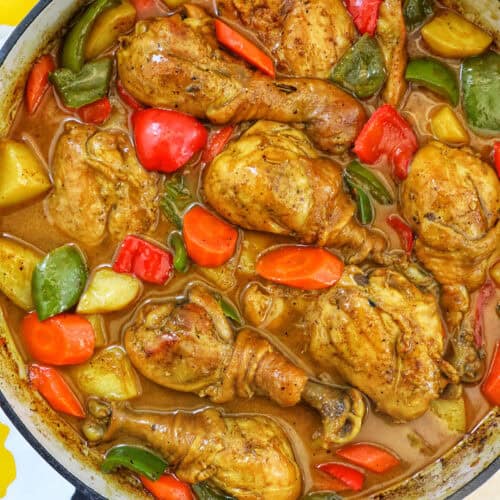
Meta Sosnowski says
So thankful for this! 🌸